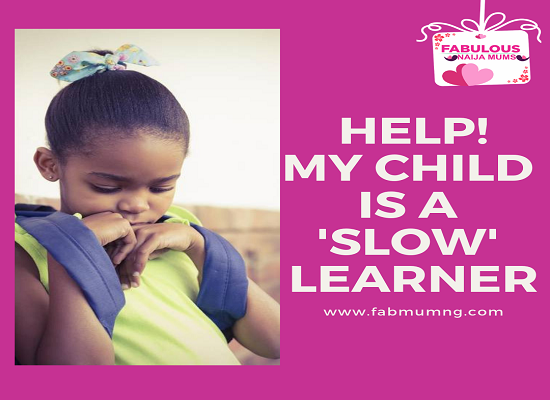 Teaching your child to greet people courteously is one of the first steps to instilling good manners in him or her.
Teaching your child to greet people courteously is one of the first steps to instilling good manners in him or her.
Articulating a greeting of “good day, thank you or goodbye, is an essential skill that every child of speaking age can provide.
The truth is that how a child presents himself to others upon meeting them will say a lot about how well-mannered he is, and this important skill will carry him into his adult years.
This article is an exposition on classified tips on how to teach your kids to greet from an early age. Dive in!
1. Encourage Your Child To Greet People Immediately They See Them
Teaching your kids to greet people the moment they set eyes on them will go a long way in instilling on them the habit of greeting all the time.
A great way to achieve this is by having them greet you and your spouse as soon as they rise up from bed with something like a simple “good morning, mummy”, “good morning daddy”.
It is important that you begin teaching your kids to greet early enough; as soon as they start learning how to talk, so it becomes an indelible part of their character.
This way, as from ages 3, you won’t have to do the almost embarrassing reminders with prompts like “have you greeted Mr./Madame…today?
Won’t you say Hello?” etc.
They already know it’s “good morning (or afternoon or evening) sir” if the person being addressed is male or “good morning ma” if the person is female.
Teach them to exercise other forms of greeting like saying “Hello! How are you today?” to their peers, “thank you” when someone renders them assistance, gives them a compliment or hands them something.
2. Teach Them To Stand When Greeting Adults
If your child is seated—say on the sofa in your living room—and an acquaintance or a visitor comes into the room or approaches him to say “hello”, teach them to stand up before saying their greetings. Etiquette demands this. It shows respect and good manners.
3. Use Greeting Songs As A Teaching Aid
Greetings songs can help ease young kids into the habit of greeting others on a regular basis. You could teach your child to sing “Hello and How Are You,” which goes:
Call: Hello, how are you?
Response: Hello, how are you?
Call: Hello, how are you?
Response: How are you, today?
Call: I’m fine, thank you
Response: I’m fine, thank you
Call: I’m fine, thank you
Response: I’m fine, thank you.
Whether is this particular greeting song, one the kids already know—maybe they sing in their school already, or an altogether new tune you may choose to compose with your kids, try to incorporate gestures into it.
Gestures like looking into each other’s eyes while the chant is going on, shaking hands, or waving hello.
Depending on how grown your kids are, coupled with their comprehension levels, you could also stretch the greeting ritual a little further by introducing them to how pleasantries can be further exchanged. E.g.
Speaker A: “Hello Michael,”
Speaker B: “Hello, Tommy. How are you?
Speaker A: I’m fine. I’m glad you came to see me.”
Speaker B: “Glad I could make it too”
And they shake hands…
4. Use Role-playing To Teach Your Kids Greeting Skills
Consider playing dress-up with your child and pretend to be different characters for her to greet. You could even speak in different silly accents to make it more entertaining.
Help your child practice greeting people at home.
Encourage them to have their teddy bears greet each other when playing with them. Remember to add that they look at a person directly when greeting him/her.
If possible, have other adults, e.g. the child’s other parent or grandparent, alternate roleplaying with your child with you.
This will help to expose your child to different types of personalities and behaviors.
5. Use Books To Teach Your Kids greeting Skills
Literature (books) is another great medium with which you can teach your child about greeting others. For kids ages 4 and beyond, “Emily’s Everyday Manners,” by Peggy Post and Cindy Post Senning, includes a section on how to greet people in a kid-friendly manner.
For child/ren ages 8 and up, you can use “ The Guide to Good Manners for Kids” as this one provides more detailed directions on greeting others as well as guidance on developing other important manners for excellence.
6. Teach Them Greeting Safety
Children are naturally excited beings. This is why they might zealously want to greet everyone they meet once they learn how to greet people.
Therefore, it is especially important to teach her how to stay safe around strangers when you are not with them.
Teach your child that when he/she is with you or another parent, it is okay to greet other adults, however, when they are not with you, teach them to excuse themselves and check first with the adult they’re with.
If for some reason, your child is not with an adult and the stranger continues to approach them, teach them to run towards a crowd, yell as loud as possible and contact the nearest “safe” adult, such as a police officer, a warden, or a family with kids.
7. Be Encouraging, And Praise Positive Behaviour
Review how things went with your child soon after he/she greets someone. If she wasn’t able to muster a hello, then reassure your child that you know that she will do better next time.
Have you read: 6 Secrets To Raising Confident Girl Child
If your child feels discouraged or feels like she didn’t do something right or made a mistake, encourage her to learn from that experience and apply it to the next chance she has to greet someone.
And if things went well, tell him how proud you are of him for greeting someone so nice. You could say something like: “You made that person really happy and brightened their day with your voice”.
Children are more likely to repeat actions—greeting others, in this case—if they receive positive feedback or reward from them.
8. Be Consistent
Teaching kids to greet others is a commitment that will need time, patience, and most of all, consistency.
Ensure you feature these lessons in your child’s daily routine and look for opportunities to help your child work on their greeting manners not just at school, but at home and during family outings as well.
This will help your child to develop the habit which will prove helpful at different life stages, and not just in one circumstance.
9. Make It Fun For Your Child
Remember to make this about having fun and connecting with people rather than presenting it as a chore your kids have to do.
Have a little fun while role-playing, and be sure to dish them lots of praises.
Disclose to your child that when she greets people politely, they will reward her with compliments.
Find more tips on parenting here.



